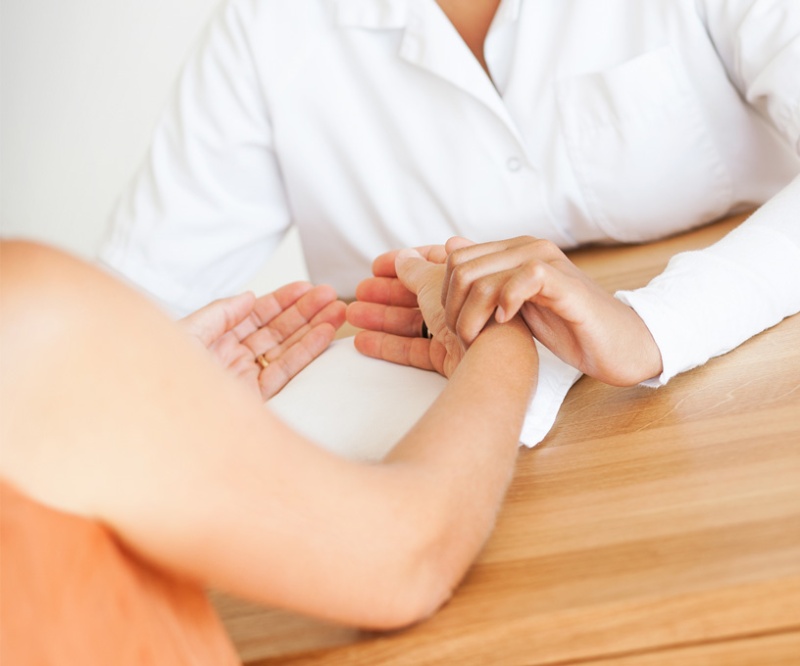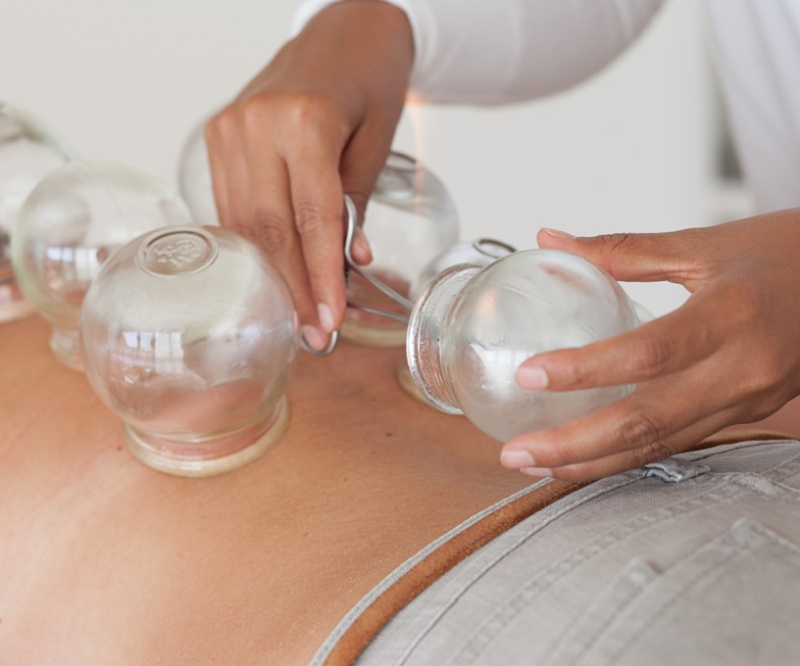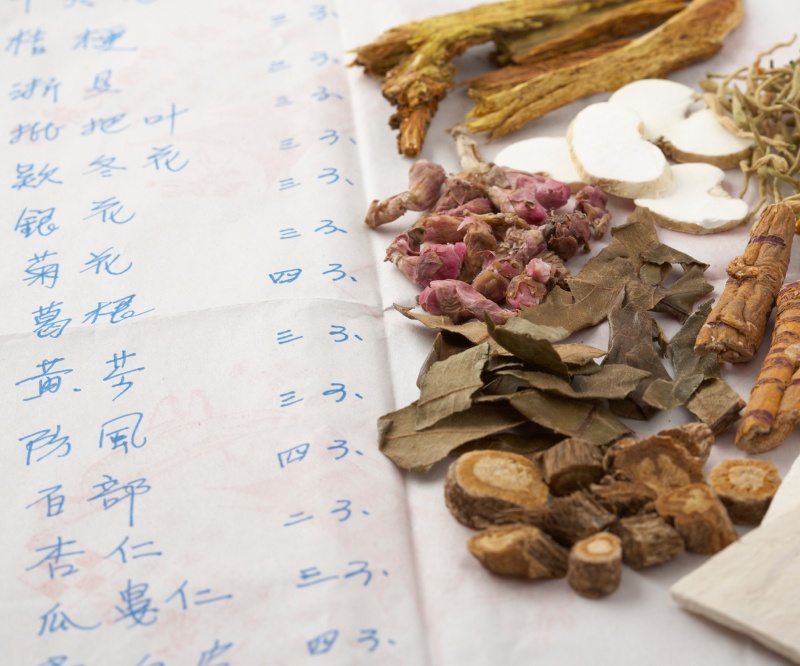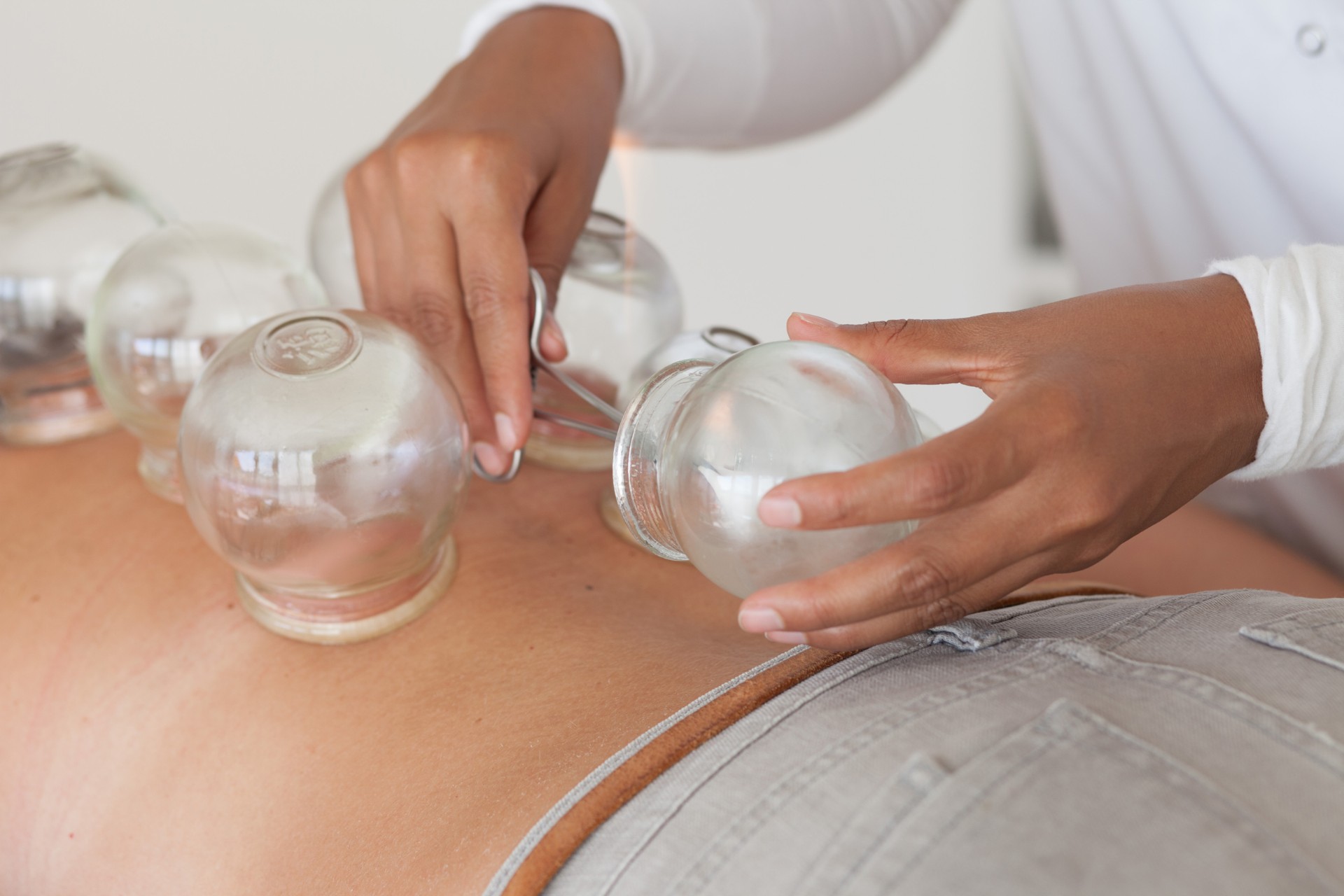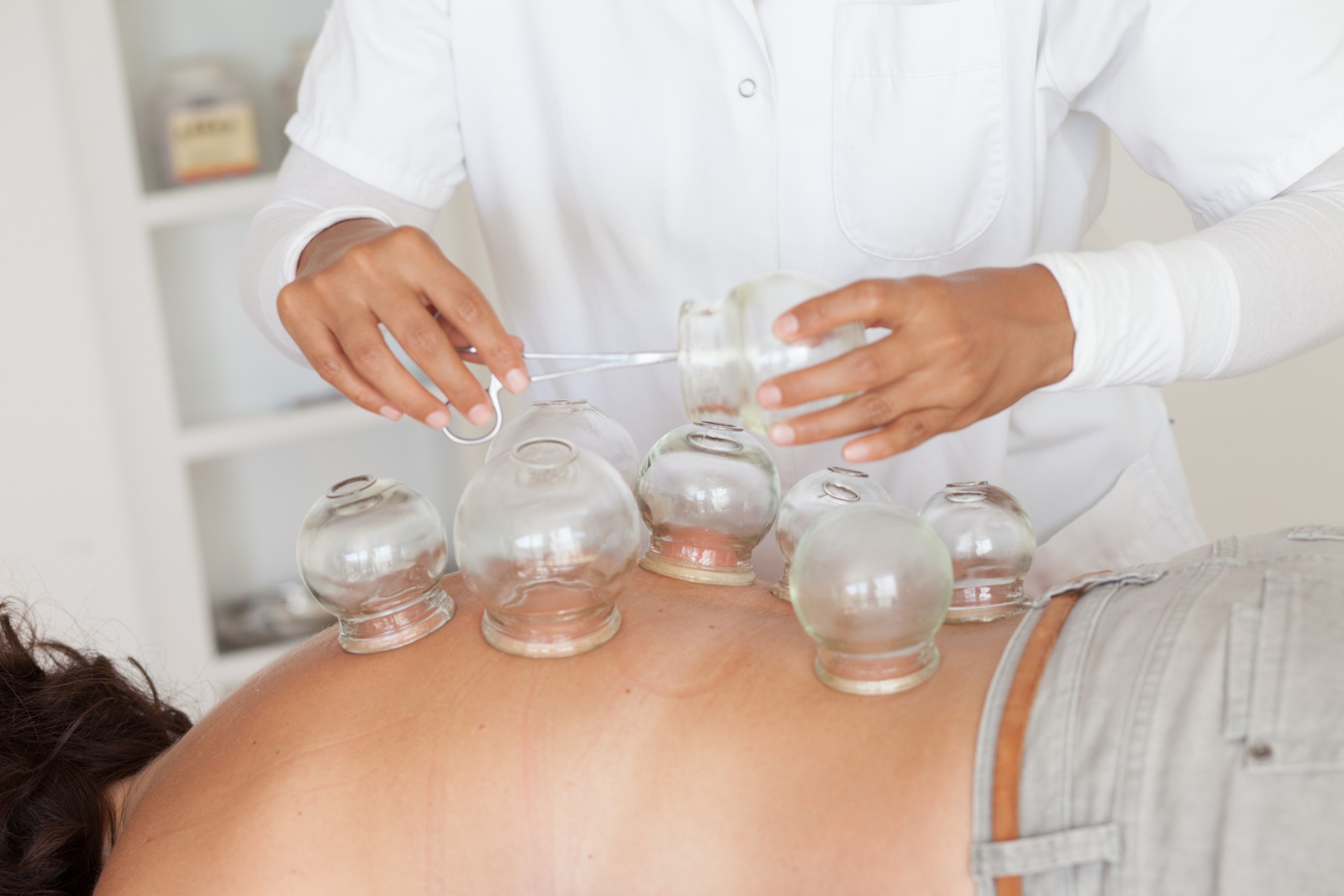Methods
Traditional Chinese Medicine uses different therapies which are based on a holistic and individual understanding of the human body. The diagnosis which precede TCM therapies focus on the sensory perceivable condition of the body by using pulse or tongue diagnosis. For the treatment of the causes and symptoms of diseases in most cases a combination of different treatment methods is used.
Acupuncture
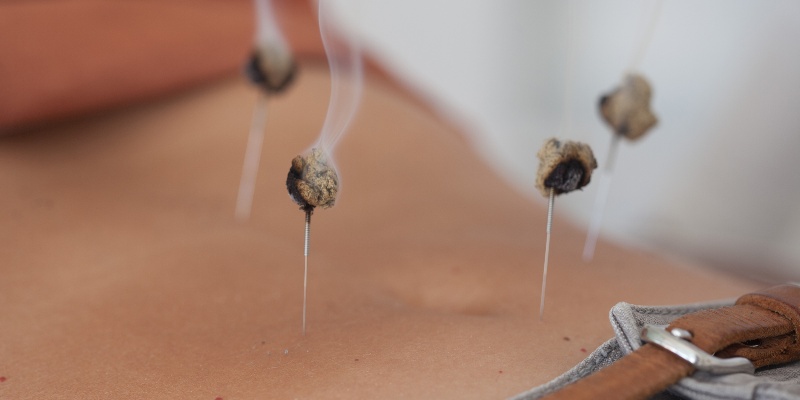
Acupuncture is a specific therapeutic manipulation of bodily functions by using precise points on the body’s surface known as acupuncture points. In acupuncture, extremely fine needles are inserted into precisely selected points alongside the so called ‹meridians› in order to regulate the vital energy (‹Qi›). By using acupuncture the Qi circulation is being brought into alignment and designated organ systems are either stimulated or dampened. Other therapies such as moxibustion, electrical stimulation and cupping can be used in combination with acupuncture. In each acupuncture session between four and twenty-four needles are used; and depending on the symptoms one treatment can last anywhere between 10 minutes (treatment for a common cold) to 75 minutes (treatment for an acute migraine attack).
Ear acupuncture
Ear acupuncture was developed and made public in the early 1950s by the Frenchman Paul Nogier and his colleagues Bourdiol, Bossy and Jarricot. In China, ample experiences were gathered from this method, hence nowadays a TCM method of ear acupuncture exists as well. More than 80% of ear acupuncture points found by Nogier and TCM are identical. Today, ear acupuncture is used worldwide in the treatment of pain and vegetative disorders. Great results can also be found in the field of internal medicine and gynaecology. Ear acupuncture is also being used in some drug withdrawal programs (‹S-T-O-P›, Addiction therapy using ear acupuncture in Basel, Switzerland since 1994).
Moxibustion
When using moxibustion precisely selected acupuncture points or specific body areas are warmed by burning ‹Ai Ye› (Folium Artemisia vulgaris = Mugwort). Either small cones of ‹Ai Ye› are placed on ginger or garlic slices respectively, then placed directly on the skin and burned there, or the ‹Ai Ye› is rolled into a cigar like shape which warms up the selected area. In another type of application, part of the ‹cigar› is placed on top of the needle and burned there, in order to lead the heat directly to the depth of the acupuncture point.
Cupping
In cupping, air in a glass hemisphere (cupping glass) is heated and the hemisphere is placed immediately on the skin. This process leads to the skin being sucked in by the negative pressure arising when the air is cooling. This suction leads to the blood being drawn from the vessels into the external skin layers which might cause bruising. This bruising is then destroyed by the white blood cells which provoke a special form of ‹attention› to the affected tissue. This therapy is mainly used in the treatment of common colds, muscular tension and pain conditions.
Chinese herbal medicine therapy
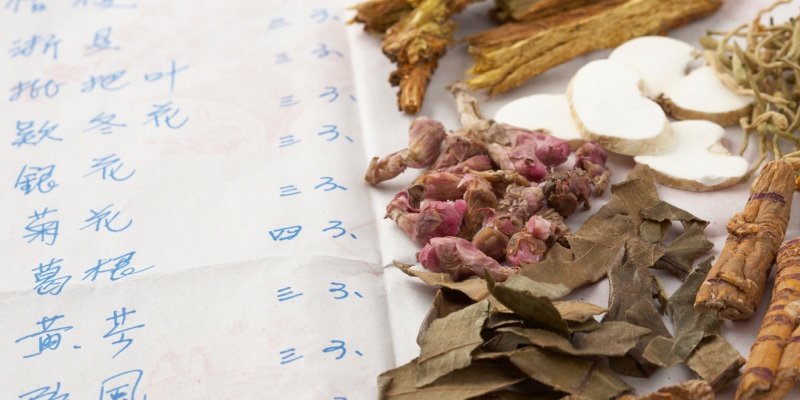
In Chinese herbal medicine, classic TCM recipes which have proven their worth for hundreds, sometimes thousands of years are used in form of decoctions, teas, powders, pills, ointments, suppositories and baths. An incredible treasure of experiences on how to use herbal, mineral and animal constituents have been gathered for more than 5000 years.
Equally large is the knowledge about synergies - interactions - of the individual agents. One remedy alone can consist of between 9 and up to 20 different components. Experienced therapists will compile or rather prepare an individual remedy for each patient. Nowadays, the individually designed remedies are mostly prepared as powders or pills in order to make it easier to adapt them to our lifestyle. These pills or powders are prepared according to the therapists instructions which is why they are to be used by the designated person only (‹magistral formula›). Often, one needs to get used to the taste of the medicine, not to say that it tastes bad. Nevertheless one could argue that the acquired taste is compensated by the fact that in most cases the obtained results are excellent.
Do you have any questions?
contact us

